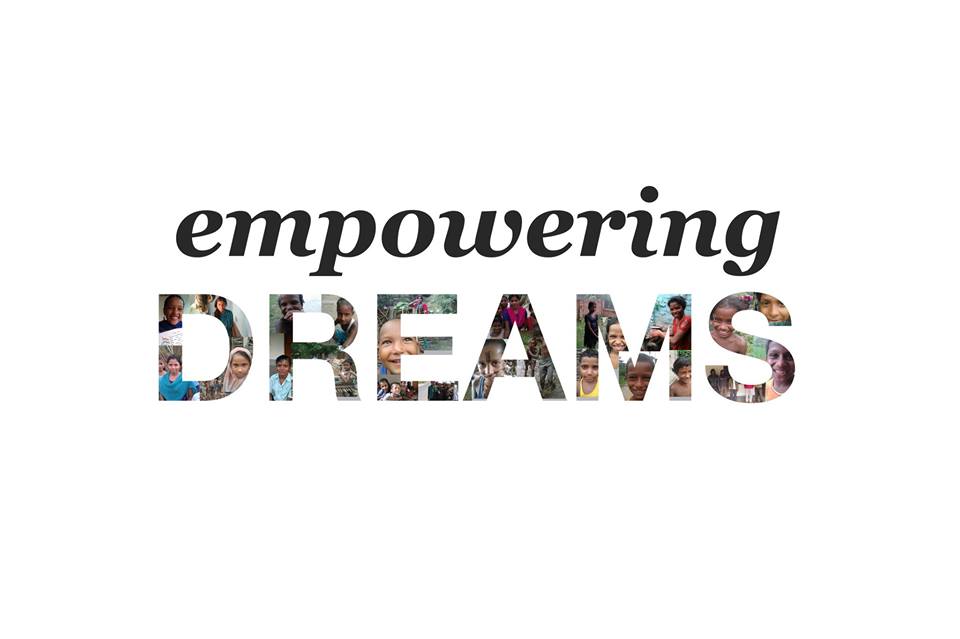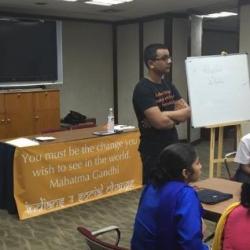Featured I4SC Partner: SEEKHO is Revolutionizing Changemaking in Bihar

SEEKHO is a young and growing non-profit that has set out to change the way local changemakers in Bihar approach and solve problems. We are very excited that they will be partnering with Indians 4 Social Change to provide inspiring and informative content about their work!
I had the pleasure of speaking with one of SEEKHO’s main volunteers, Sam Brundrett, who is the head of business development. He grew up in upstate New York and has been working with SEEKHO for seven months. He works on various aspects of the organization including teaching English, working on partnerships and fellowships and marketing. A separate article contains an email interview I had with him.
Background
The organization was started by Zubin Sharma, on a trip to Bihar during a semester off from the University of Pennsylvania. After numerous meetings with community members, he began working on education by providing programs for students of all age that were run by locals. As time went on, SEEKHO’s changemakers began to address other issues. Thus, SEEKHO took on the following manifesto:
Potential exists everywhere
And locals know best
But even locals need a little help sometimes.
If we connect and support the right people
Set our goals high
And remember that progress is about more than just money
And also includes health, education, and our relationships,
What a wonderful world it will be.
Their Approach
Villages in Bihar have many problems that extend from education systems and health care to poverty and community cohesiveness, but Sam said that one of the largest problems that exists is that Bihar is homogenized as sick, impoverished, violent and the prevailing belief is that to solve those issues you have to bring in outside talent. He loves that SEEKHO breaks that myth by identifying, training, and supporting people within the villages to help create change. They use a unique model to bring all of the existing resources within a community together by working directly with “local changemakers.” These “local changemakers” then empathize with their respective communities in order to understand it’s complex dynamics and resources (within education, community and cultural vitality, living standards, health and psychological well-being) and work with them to create a solution.
SEEKHO recognizes that potential exists everywhere, but that it needs the right resources to thrive and spur micro-social innovations. Their goal is to cultivate that supportive ecosystem. In order to do so, they use three methods:
Community Organization: They work to train local changemakers in public speaking, partnership development, asset mapping, organization, and leadership development to unite in order to unite the village
Positive Psychology: They spend time to train volunteers to identify and enhance their strengths and virtues that lead to higher well-being, academic achievement, increased future earnings, better health, and more pro-social behavior.
Design Thinking: They realize that problems are contextual and as such so are effective solutions. By using the design thinking framework, the local changemakers learn to empathize with the community to produce context specific solutions, which leverage exiting resources and have real world application.
Problems
I asked Sam what the biggest problems that SEEKHO faced were and he believes that there are three main problems:
Resistance: It takes times for villages to warm up to SEEKHO, as NGO’s don’t have the same perception as they do in other countries.
Norms and Perceptions: It is hard to change people’s attitudes that have been cemented for so long. It is a long process to get people to recognize that it’s not that “nothing ever changes in that place,” but rather “change is possible in that place.”
Resources: Even as he was speaking to me, the lights flickered and his Internet spotty. Sam also mentioned that finding the right resources for education was hard.
Despite these problems, SEEKHO has achieved a lot in its early life. They are working in 15 villages, served almost 2,000 children, and are only looking to expand to more villages in Bihar.
Future
Their ultimate goal is to make these villages self-sustainable. Since, they are not based on a model that uses outside leaders and changemakers, it has the potential to empower a village to solve its own problems, and then shift attention to another. They hope they can achieve holistic development in rural Bihar, and serve as a model for other areas in India. The programs are the brainchildren of the local changemakers and SEEKHO provides financial and educational tools to make them a reality. This increases their scalability by a lot, since the high costs associated with bringing in outside talent are not applicable.
They have a cool new program coming up soon where they hope to hold a TedX Conference in Delhi to feature fellows from their recently started “Summer Innovation Fellowship” Program. The idea is to show people that potential exists everyone as well as to dispel many of the negative notions people hold about Bihar. Sam put is as “giving a voice to rural Bihar.”
How Can I Help?
To aid in the great work that SEEKHO is doing, you should start by following them on Facebook, Twitter,Instagram, and checking out their website. Also, if you can, you should donate to their programs that provide such high return on low investments!
Subscribe to our newsletter to get updates when we publish future articles, including those written by SEEKHO staff!





